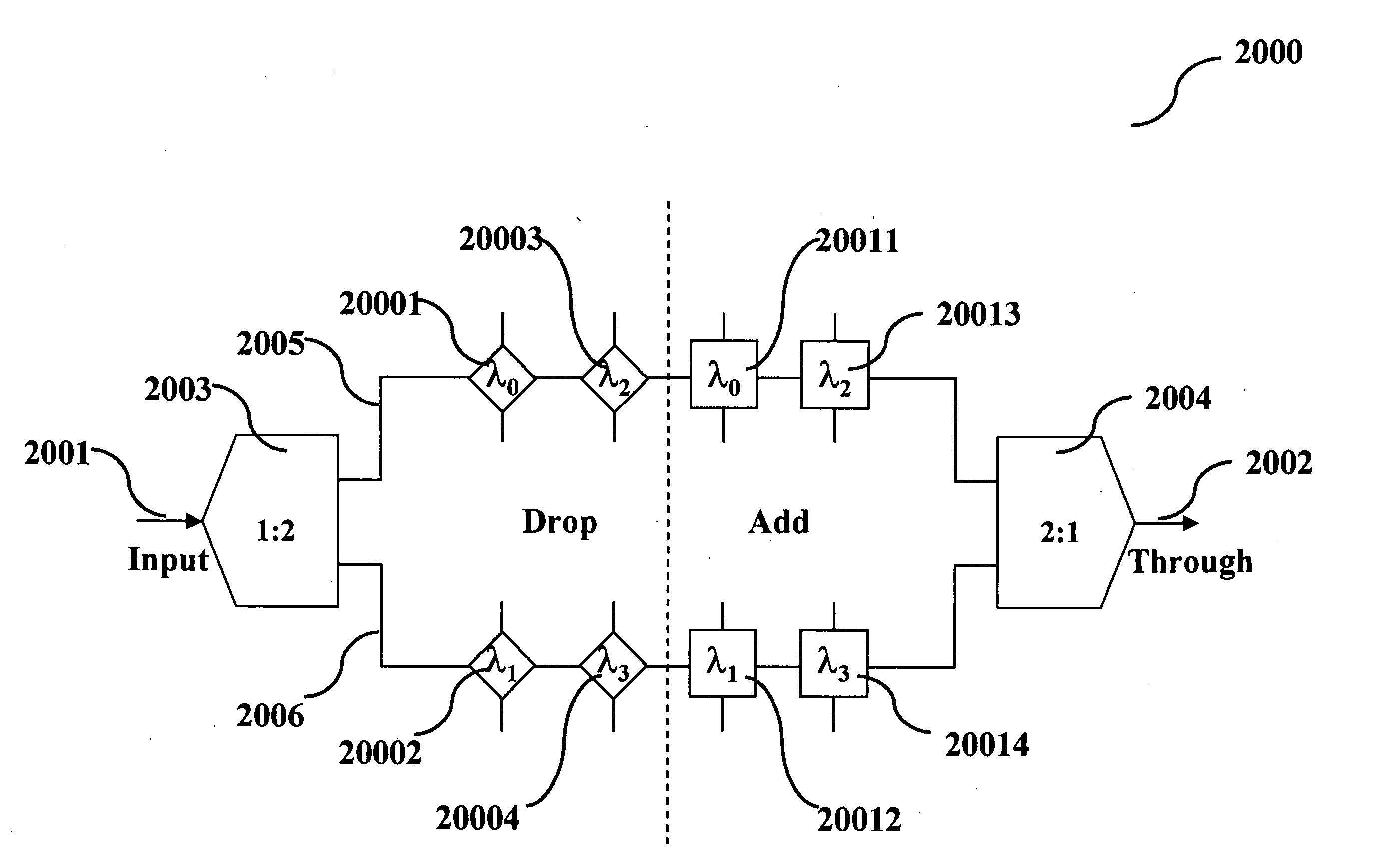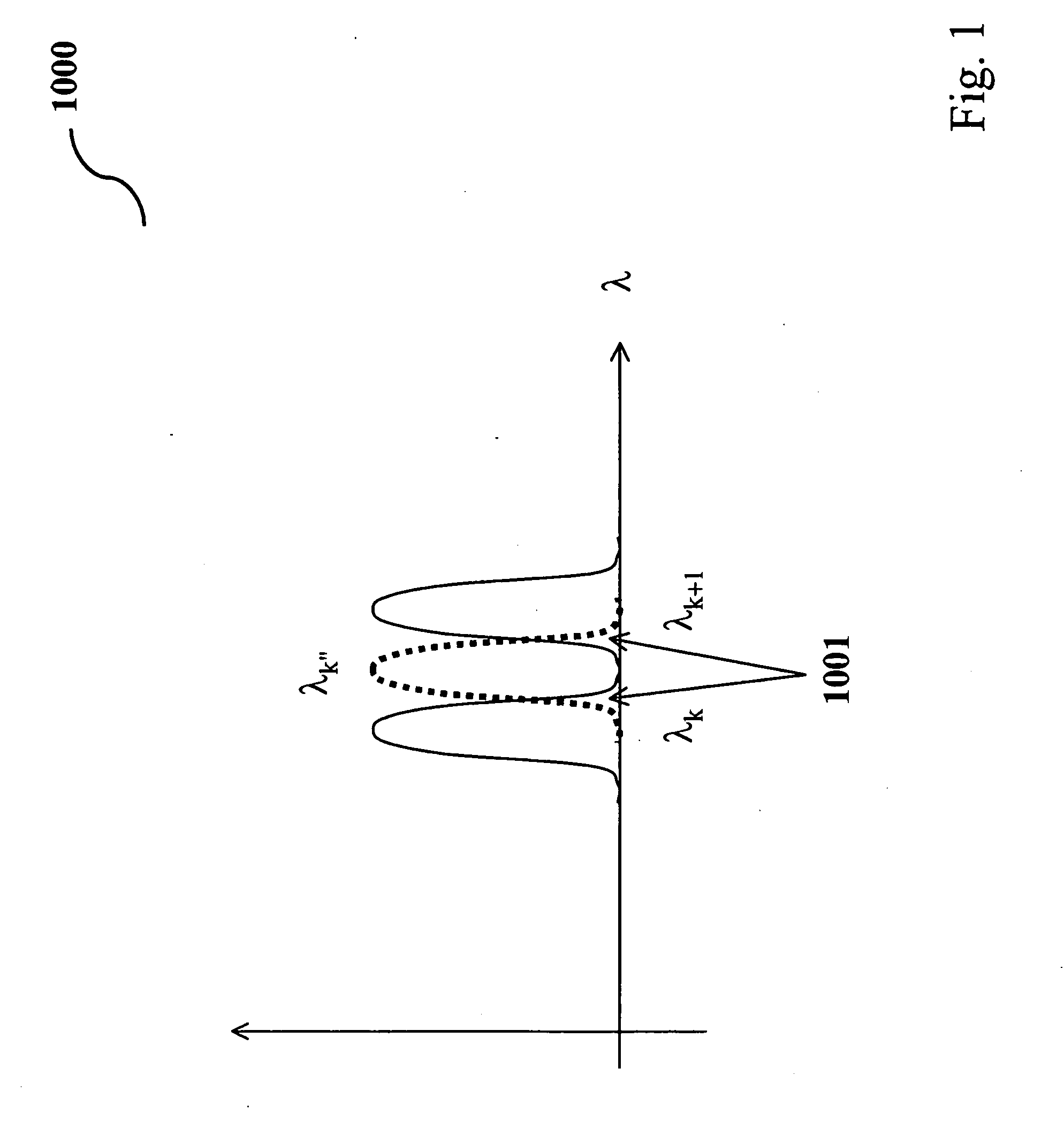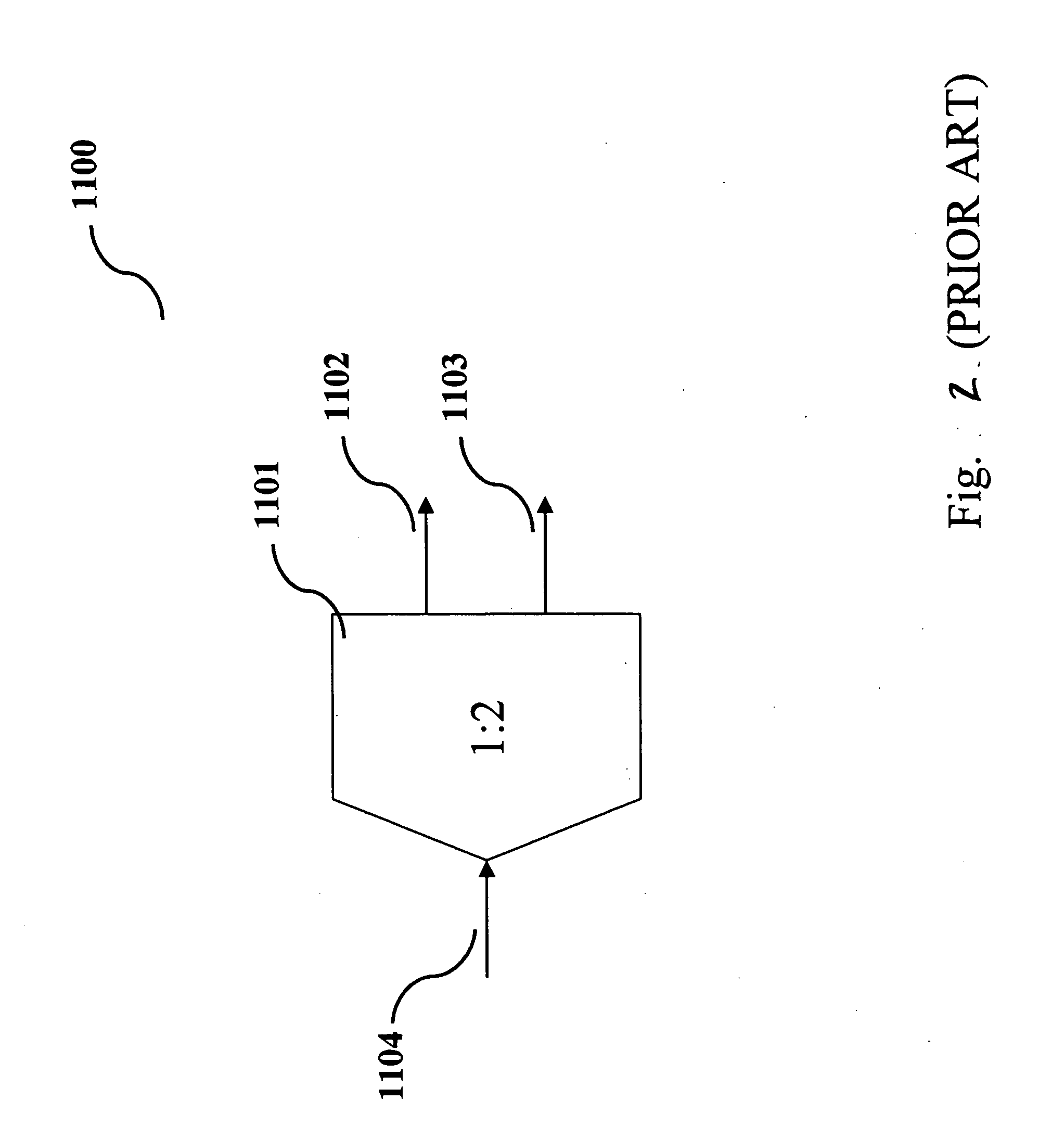Wavelength division multiplexing add/drop system employing optical switches and interleavers
a technology of optical switches and interleavers, applied in the field of design and manufacturing of multiple wavelength add/drop systems, can solve problems such as channel cross-talk, channel cross-talk, and/or (b) unnecessary power loss among neighboring channels
- Summary
- Abstract
- Description
- Claims
- Application Information
AI Technical Summary
Problems solved by technology
Method used
Image
Examples
first embodiment
[0077] To generalize, this invention relates to the design of an N-channel OADM utilizing:
[0078] (1) two 1:M optical wavelength interleavers,
[0079] (2) M optical paths,
[0080] (3) P (where P times M is greater than or equal to N) wavelength selective “add” optical switches, and
[0081] (4) the same number of wavelength selective “drop” optical switches on each path.
[0082] FIGS. 12A˜12C and 13 illustrate the case when N=4 and M=2, and FIGS. 15A˜15C and 16 illustrate the case when N=8 and M=4. These are merely illustrative examples and the contemplated combinations are nearly endless for an N-channel OADM based on this method. In each design, signal degradation due to propagation loss and optical switches are reduced by a factor of M compared to the conventional design. This embodiment is advantageous, therefore, in cases where this factor-of-M reduction outweighs signal degradation due to the two interleavers.
[0083] The architecture above can be adapted to use combination add / drop ...
second embodiment
[0093] To generalize, this invention relates to the design of an N-channel OADM utilizing
[0094] (1) two 1:M optical wavelength interleavers,
[0095] (2) M optical paths,
[0096] (3) P (where P times M is greater than or equal to N) wavelength selective “add / drop” optical switches, on each path.
[0097] FIGS. 18A˜18C and 19 illustrate the case when N=4 and M=2, and FIGS. 20A˜20C and 21 illustrate the case when N=8 and M=4. These are merely illustrative examples and the contemplated combinations are nearly endless for an N-channel OADM based on this method. In each design, signal degradation due to propagation loss and optical switches are reduced by a factor of M compared to the conventional design. This embodiment is advantageous, therefore, in cases where this factor-of-M reduction outweighs signal degradation due to the two interleavers.
[0098] The architecture described above can be adapted to use wavelength selective reflective optical switch as shown in FIG. 22. The thin outline o...
third embodiment
[0108] To generalize, this invention relates to the design of an N-channel optical “drop” multiplexer utilizing:
[0109] (1) two 1:M optical wavelength interleavers,
[0110] (2) M optical paths,
[0111] (3) one optical circulator, and
[0112] (4) P (where P times M is greater than or equal to N) wavelength selective reflective optical devices on each path.
[0113] FIGS. 24A˜24C and 25 illustrate the case when N=4 and M=2, and FIGS. 26A˜26C and 27 illustrate the case when N=8 and M=4. These are merely illustrative examples and the contemplated combinations are nearly endless for an N-channel OADM based on this method. In each design, signal degradation due to propagation loss and optical multiplexers are reduced by a factor of M compared to the conventional design. This embodiment is advantageous, therefore, in cases where this factor-of-M reduction outweighs signal degradation due to the two interleavers.
[0114]FIG. 28A shows a schematic of an optical wavelength blocker. It consists of wa...
PUM
 Login to View More
Login to View More Abstract
Description
Claims
Application Information
 Login to View More
Login to View More - R&D
- Intellectual Property
- Life Sciences
- Materials
- Tech Scout
- Unparalleled Data Quality
- Higher Quality Content
- 60% Fewer Hallucinations
Browse by: Latest US Patents, China's latest patents, Technical Efficacy Thesaurus, Application Domain, Technology Topic, Popular Technical Reports.
© 2025 PatSnap. All rights reserved.Legal|Privacy policy|Modern Slavery Act Transparency Statement|Sitemap|About US| Contact US: help@patsnap.com



